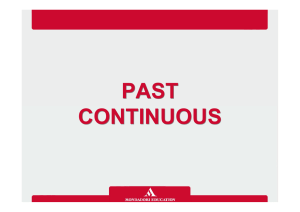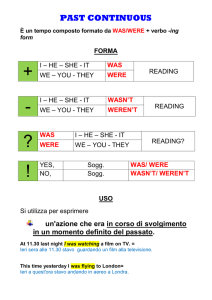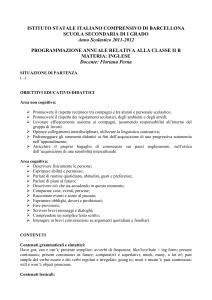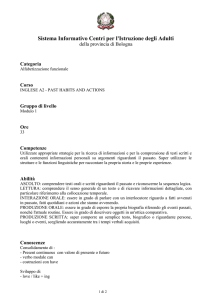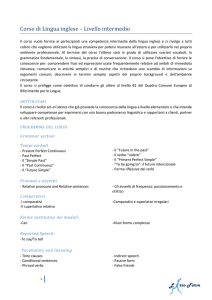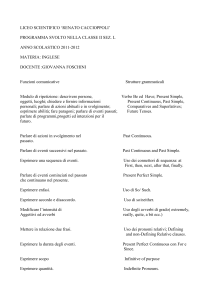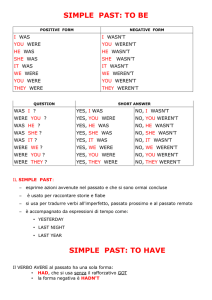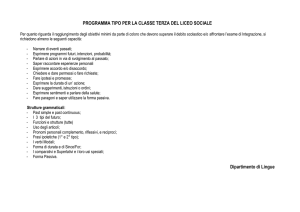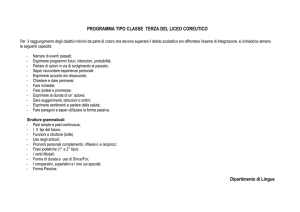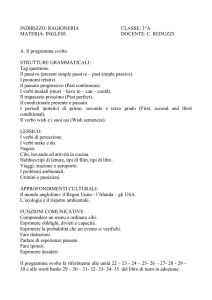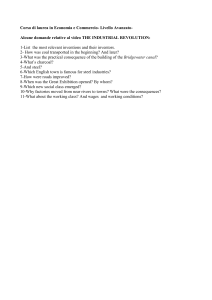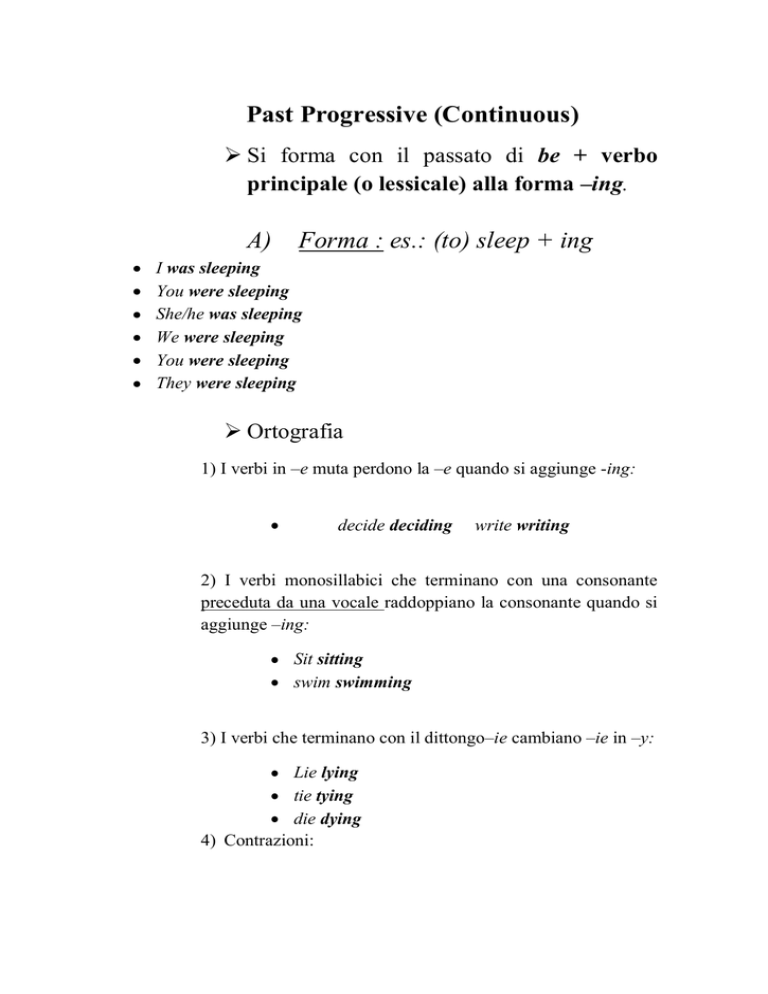
Past Progressive (Continuous)
Si forma con il passato di be + verbo
principale (o lessicale) alla forma –ing.
A)
Forma : es.: (to) sleep + ing
I was sleeping
You were sleeping
She/he was sleeping
We were sleeping
You were sleeping
They were sleeping
Ortografia
1) I verbi in –e muta perdono la –e quando si aggiunge -ing:
decide deciding
write writing
2) I verbi monosillabici che terminano con una consonante
preceduta da una vocale raddoppiano la consonante quando si
aggiunge –ing:
Sit sitting
swim swimming
3) I verbi che terminano con il dittongo–ie cambiano –ie in –y:
Lie lying
tie tying
die dying
4) Contrazioni:
Nella lingua parlata si usano le forme contratte:
I’m
you’re/we’re/they’re
he’s/she’s/it's writing
Forme negative
Le forme negative del Past Continuous si formano aggiungendo not alla
voce del verbo be. Was e were s i contraggono in wasn’t e weren’t.
I (was + not) wasn’t listening
You (were + not) weren’t listening
He (was + not) wasn’t listening
We (were + not) weren’t listening
You (were + not) weren’t listening
They (were + not) weren’t listening
Forme interrogative (Polari: yes/no)
Nella formulazione delle domande al Past Continuous si inverte la
posizione della voce di be.
Was I reading?
Were you reading?
Was he/she reading?
Were we reading?
Were you reading?
Were they reading?
Domande specifiche (-Wh)
What were you doing? (Che cosa stavi/stavate
facendo?)
Why was he playing? (Perché stava giocando?)
Who was laughing? (Chui stava ridendo?)
Ecc.
B) uso
Il Past Continuous descrive un’azione già in corso in un
momento del passato e che potrebbe continuare anche
dopo tale momento:
I was still working at 6 o’clock (and I continued
working after that point.)
Oppure l’azione potrebbe interrompersi proprio in quel
momento del passato:
I was working at my computer when the power cut
occurred.
C) Funzione
Spesso l’azione in corso fa da cornice a un fatto
improvviso:
Azione in corso
fatto improvviso
I was having my lunch when Ruth phoned
(stavo pranzando quando ha telefonato Ruth)
While I was waiting for the bus, I met Karen
(Mentre aspettavo/stavo aspettando l’autobus, ho incontrato Karin)
o
Il Past Continuous si traduce con l’imperfetto o con il costrutto italiano stare +
gerundio.
Il Past Continuous descrive anche una serie di situazioni che
facevano da contesto a un fatto:
The airport was full of people. Some were sleeping on
benches, some were shopping, others were reading.
Il Past Continuous si impiega per descrivere due azioni in
corso nel passato che si svolgevano contemporaneamente:
While Jim was cooking, David was phoning a friend.
Il Past simple e il Past continuous: differenze fra le
due strutture:
Il past simple indica un’azione che si è conclusa in un
tempo determinato:
I arrived here two hours ago/in September/last week
/at 6:00.
Helen lived in Madrid for three weeks.
Il past progressive descrive un’azione che era in corso nel
passato:
es.: While we were waiting for the train, it started to rain
I cut my finger when I was peeling the potatoes
Si impiega il past progressive per descrivere azioni e
situazioni temporanee. Quando si parla di azioni e
situazioni permanenti si usa invece il simple past.
When I got home, I found that water was running down
the kitchen walls.
Explorers found that the river ran into the Atlantic.
Il past progressive non si impiega per parlare di azioni
ripetute o abituali. La forma più appropriata in questi
contesti è il simple past.
Es.: I rang the bell six times. (NOT: I was ringing the bell
six times.).
Antonio Piga

